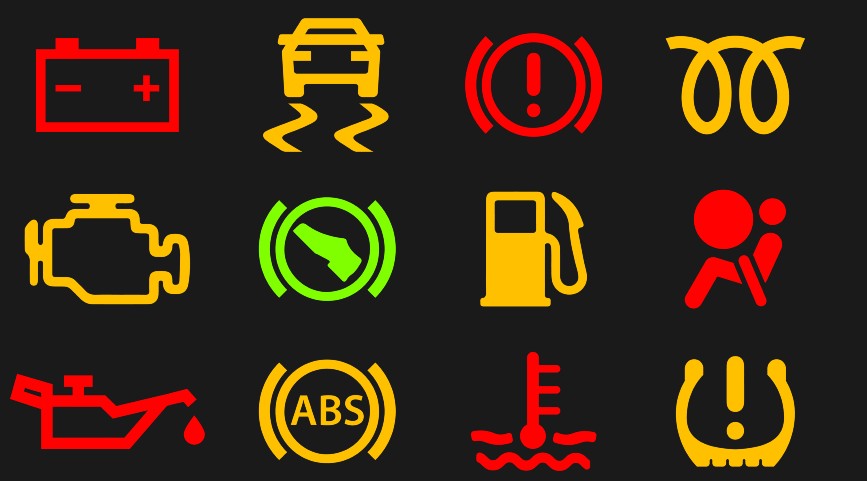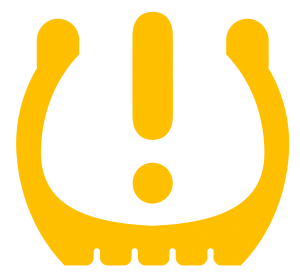- November 29, 2021
- By Autocare Centre Chepstow
- In Tips & Guides, Uncategorized
- 4093
- 0

All vehicles have a variety of dashboard warning lights that relate to different systems. Understanding these warning lights is important, as it could save you from a potential accident or breakdown.
In many instances, warning lights will appear momentarily on the dashboard when you switch on your ignition but should disappear soon after. If one or more of these warning lights continues to show whilst the engine is running, it could be a sign that there’s an issue with your car.
We’ve put together a guide to some of the most common dashboard warning lights including what they mean and what you should do when you see them.
Dashboard warning lights follow a traffic light system and are displayed in either green, amber, or red depending on how serious the problem is.
Green: The system is working correctly or is currently in use.
Amber: Something is not working correctly – be cautious when driving and inspect the cause of the issue as soon as possible.
Red: There is a serious, and potentially dangerous problem – stop driving as soon as it is safe to do so.
Whilst an amber warning light is less urgent than red, it is recommended that you take the same precautions as you would with more serious warnings to prevent possible damage to your vehicle.

This light is also known as the “check engine” or “ECU warning light”. If this warning illuminates, it’s important to get your car checked, even if it feels completely normal to drive. This is because it warns of a potential problem with the engine, which can be dangerous if left unchecked.
The engine warning light can indicate a number of issues, from minor faults such as a broken sensor, to a much larger mechanical problem, such as a fault with your catalytic converter. You should aim to get your vehicle checked as soon as possible if this light comes on to avoid the risk of potential damage to your engine.

Also known as the “low engine oil” or “low oil pressure” warning light. Aside from a brake warning light, an oil warning light is one of the most serious and should never be ignored. This light is illuminated when either the oil temperature is too high, or the oil level or pressure is too low. Oil pressure is generated by the oil pump and keeps the engine oil circulating. If the oil is not lubricating the engine effectively, it could lead to serious damage which is often expensive or sometimes, irreparable.
If this light appears on your dashboard, you should stop as soon as it is safe to do so and turn off the engine. Check your vehicle’s oil levels and also look for any obvious oil leaks underneath the car. If your oil levels are fine, then call your breakdown provider for recovery as driving further could be dangerous.

Also known as the “brake fluid” or “brake system” warning light, this warning requires urgent attention. The cause of this light might be as simple as accidentally leaving the handbrake slightly engaged while driving but could also indicate a more serious issue with your braking system.
If your brake pedal feels spongy or sinks to the floor, or if the ABS warning light comes on simultaneously, it is likely that a significant issue has occurred. In this instance, you should pull over and stop the vehicle as soon as it is safe to do so and call for recovery.

Also known as the “coolant temperature warning light”, this light will come on if the engine is overheating. This could be due to a number of issues such as there not being enough coolant in the system but can also be a sign of a more serious issue such as a head gasket failure.
If you notice this light is red, you should stop straight away, as if your engine becomes too hot, it can lead to engine failure. Stop and wait until the engine has cooled before checking the gauge on the side of the coolant tank located under the bonnet. If the light does not go away after you have topped up with coolant, you should get it checked by a garage to address the underlying issue.

Tyre pressure monitoring systems (TPMS) were made mandatory for all cars produced in Europe and the UK after 2014. Essentially, these systems monitor the amount of air in your tyres and will provide a warning if it detects a drop.
If you see this warning light appear on your dashboard, you should check and inflate your tyres at the next opportunity. While you may not notice any change in your vehicles condition, low tyre pressure can cause unsafe driving conditions and should be consistently maintained to avoid breakdown.
For more tyre safety tips, read our dedicated blog post.

Also known as “Electronic Stability Control”, this warning light indicates an issue with traction control. You’ll usually see this appear when the wheels lose grip, most commonly in rain or snow. If the light is flashing, it means that the power steering system is intervening and doing its job – however, if the light stays on, it means the system is not functioning correctly or has been deactivated.
To check if there is an issue with your traction control, try restarting the engine. If the warning light remains on after restarting the vehicle, it’s recommended to get it checked at a garage where they can use ADAS calibration to detect if there’s an issue.
Regular servicing and MOTs can help to maintain your vehicle’s condition, identify any issues, and prevent problems occurring in the future.
If you would like to book in a service or MOT, or if you’ve noticed any of the above dashboard warning lights in your vehicle and would like to get them checked, give one of our expert team a call on 01291 627 137 today and find out how we can help.





